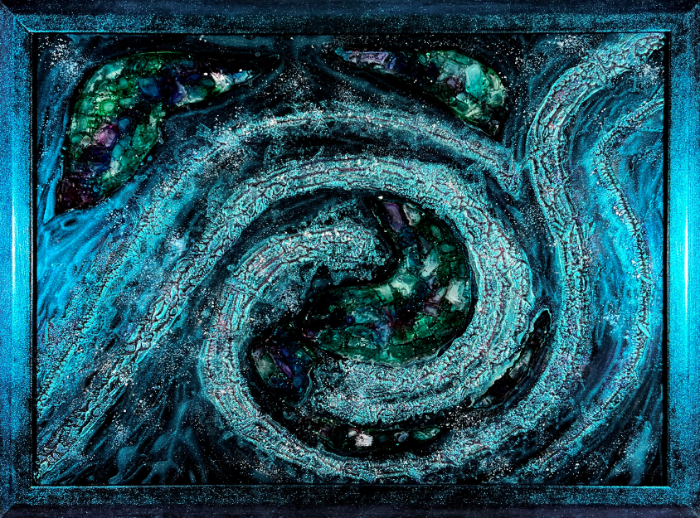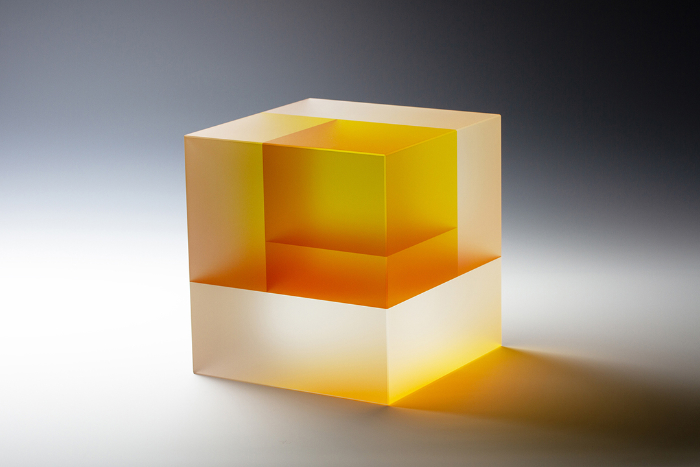
Glass objects of desire
Samantha Donaldson’s spectacular coldworked glass creations are inspired by her fascination with the different coloured layers found in rock formations. Here she explains her alchemy to Glass Network digital’s editor, Linda Banks.
What led you to start working with glass?
Whilst exploring the extensive selection of workshops at Leicester De Montfort University during my Foundation studies, I became fascinated watching people work in the glass studio. I really began to see the potential to experiment and manipulate this wonderous material!
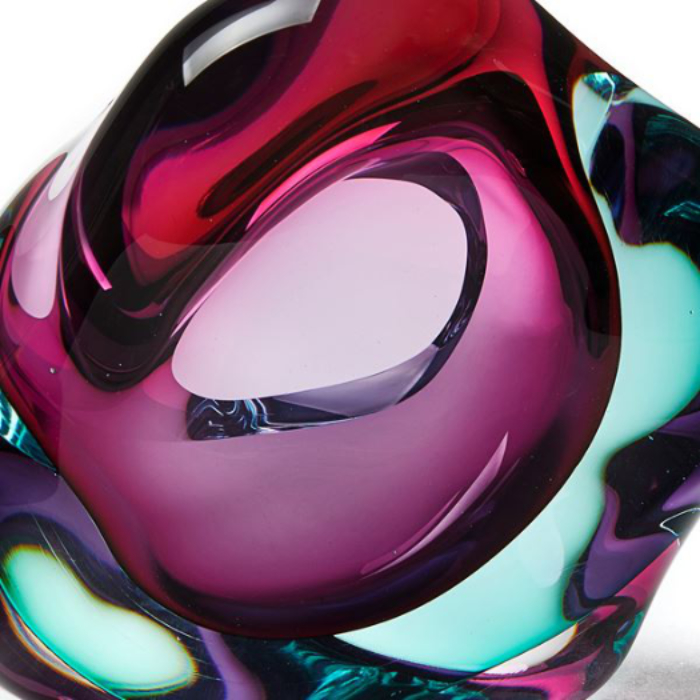
What glass techniques have you used and which do you prefer?
I quickly began to realise that I loved using coldworking techniques to transform formations, by slicing through interesting shapes, grinding through layers and polishing back surfaces. By far the most exciting moment for me is when I slice through my forms, revealing their internal movement.
 You work with glassblowers to realise your vision in glass. How do you find working with other people?
You work with glassblowers to realise your vision in glass. How do you find working with other people?
Devereux and Huskie, in the inspiring Wiltshire countryside, are without a doubt my super glass hero dream team!
I met James Devereux 10 years ago on my MA course and have continued to work with him ever since. James and I share fond memories of intense workshop experimentation over the years. Not only is he a technical genius when it comes to this material, but he has the power to delve into my mind, helping me achieve my curious creative aims!
What is your creative approach? Do you draw your ideas out or dive straight in with the materials?
I do a fair bit of sketching out of shapes and colour combinations. However, mostly I study my rocks and minerals books and pretty much dive straight into the glass with an idea I have completely designed, and usually already named, in my head!
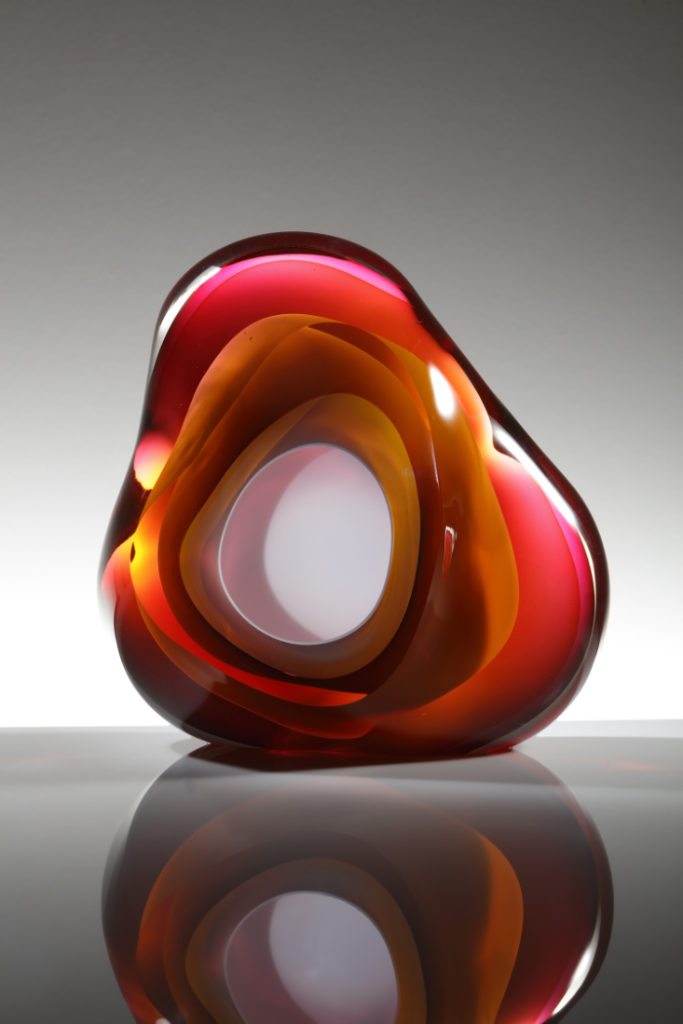
A lot of your work is inspired by nature and geological forms. Why are these important to you?
As a child we were always close to nature. I spent many hours collecting fossils, jet and interesting stones on the beach with my Dad. I think discovering glass, and researching into craftsmen that cut and polish stones to create the best possible optical effects, pushed this exploration further. I then began to look deeper into Stratigraphy, which is multi-layered and multi-coloured rock layering. It is the deposition of one layer being separated from the next by clear intervals or changes in texture, colour or mineralogy. Layers merging with one another create mysterious, unclear boundaries.
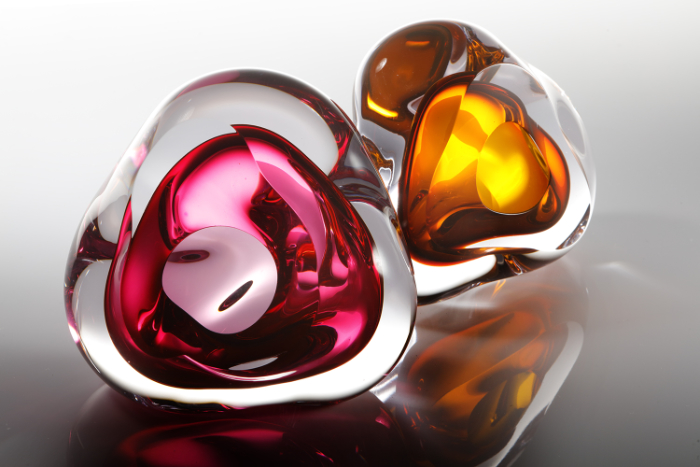
What message(s) do you want to convey through your art?
I have always been fascinated by viewers’ perceptions of an unfamiliar object of desire; the different things we all see and the way forms remind us of certain things. Glass is such a stunning instrument to use to investigate the seductive distortion of light, meandering through colours, forms and transparency. I use these artistic elements to create energy and motion in what are simply just objects of beauty, to be looked at and enjoyed.
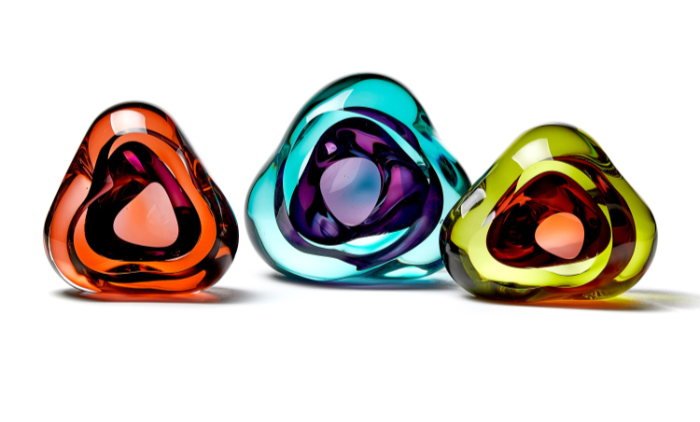
What is your favourite tool or piece of equipment and why?
I think I’d have to say the polishing lathe is my favourite tool, as it brings the biggest transformation during the process, from a frosted satin surface into a super high shine! Of course there is also a lot of elbow grease along the way!
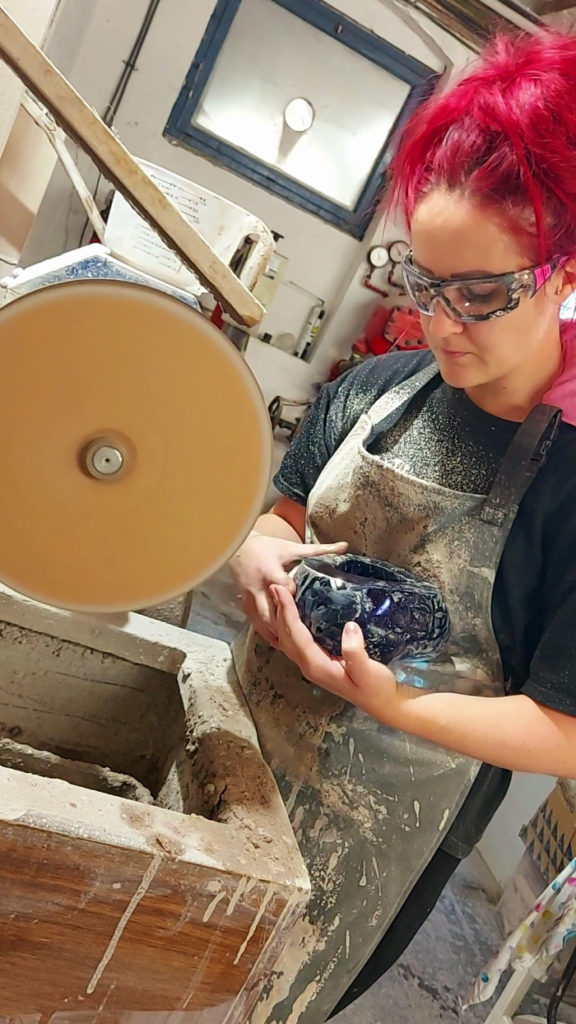
Do you have a favourite piece you have made? Why is it your favourite?
My most favourite piece I have ever made is my most recent solid, sculptural ‘Pseudomorph’. Pseudomorph is the result of years of experimentation. It turned out better than I could have possibly imagined and I can’t wait to try the next in the series. (See main image).
What advice would you give to someone starting out on a career in glass?
I would say to be patient with the material, as it takes lots of practice to achieve your vision. And to work closely with people who have had a longer relationship with glass. These people are worth their weight in gold, and their knowledge and skills should be studied and cherished.

Do you have a career highlight?
My final MA show at the Royal College of Art stands out as a highlight. I was very lucky to study with such an incredible bunch of talented people, who I will never forget.
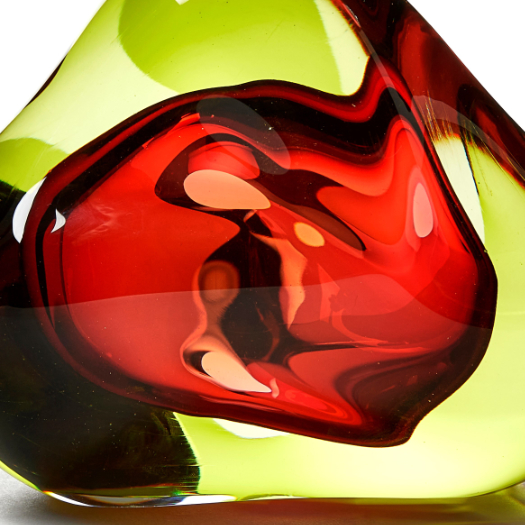
Did the coronavirus impact your practice? If so, how did you adapt?
During the pandemic I had another baby, so I wasn’t being practical in the workshops at that time. However, that period really gave me some space to take a step back and develop the new ideas that kick-started 2022. I also decided to quit my part-time job and throw everything at being a full-time artist and Mummy. This was an unpredictably tough decision, but the best I have made!
Want to know more?
Find out more about Samantha Donaldson and her work via these links:
Web: www.samanthadonaldsonglass.com
Facebook: samanthadonaldsonglass
Instagram: samantha_donaldson_glass
Email: samantha.donaldson@network.rca.ac.uk
Main feature image: ‘Pseudomorph’ is the culmination of years of research and experimentation. Photo: Simon Bruntnell.
